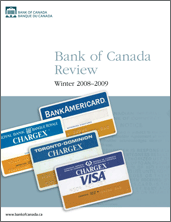Bank of Canada Review - Winter 2008-2009
Available as:
PDF
Cover page
Chargex
The artefacts on the cover are part of the National Currency Collection of the Bank of Canada.
Photography by Gord Carter
